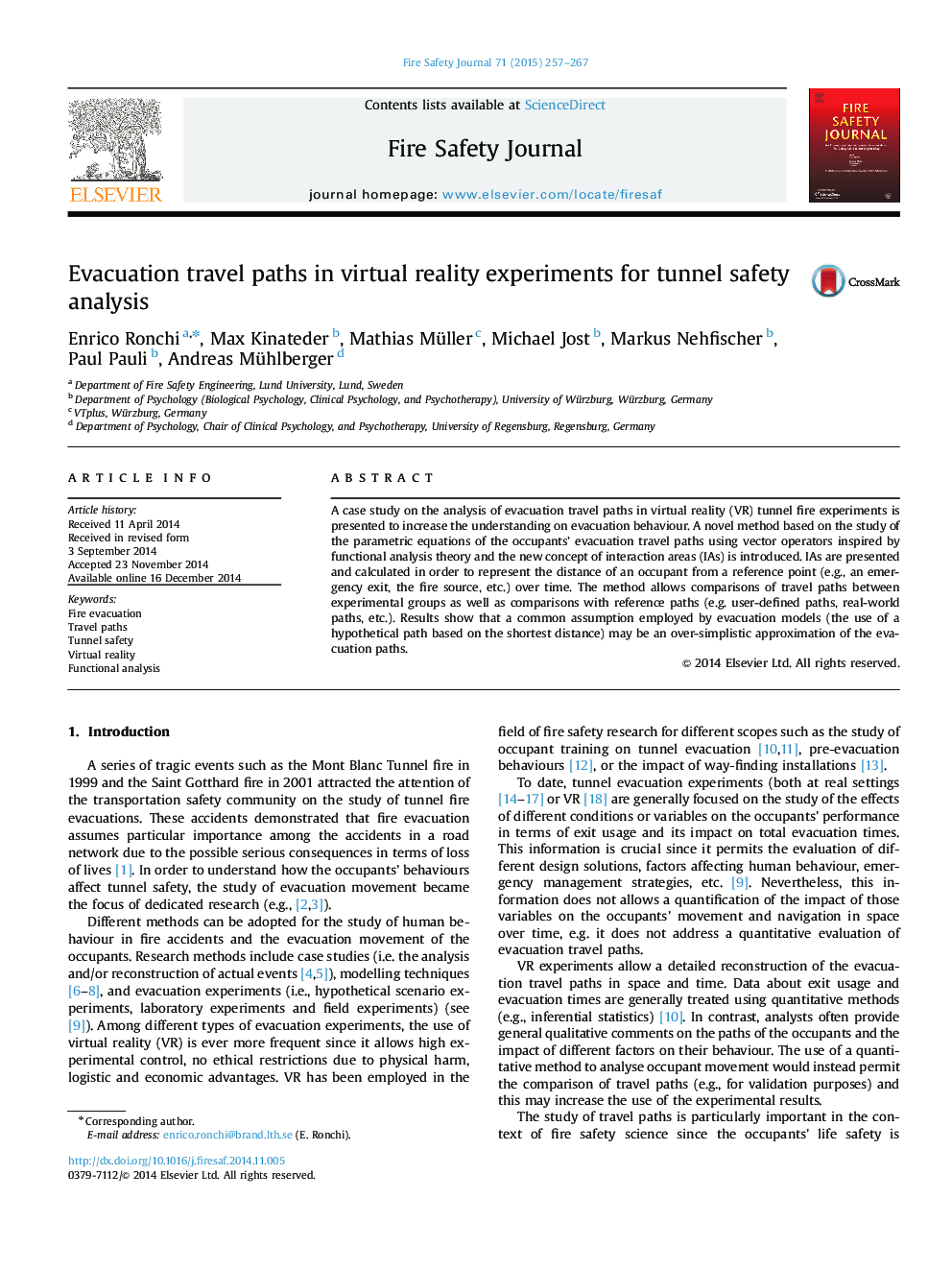| Article ID | Journal | Published Year | Pages | File Type |
|---|---|---|---|---|
| 269800 | Fire Safety Journal | 2015 | 11 Pages |
•Evacuation behaviour is studied using virtual reality tunnel fire experiments.•A novel method for the analysis of evacuation travel paths is presented.•The method is applied for a set of evacuation experiments.•Results show that common evacuation models assumptions may be over-simplistic.
A case study on the analysis of evacuation travel paths in virtual reality (VR) tunnel fire experiments is presented to increase the understanding on evacuation behaviour. A novel method based on the study of the parametric equations of the occupants’ evacuation travel paths using vector operators inspired by functional analysis theory and the new concept of interaction areas (IAs) is introduced. IAs are presented and calculated in order to represent the distance of an occupant from a reference point (e.g., an emergency exit, the fire source, etc.) over time. The method allows comparisons of travel paths between experimental groups as well as comparisons with reference paths (e.g. user-defined paths, real-world paths, etc.). Results show that a common assumption employed by evacuation models (the use of a hypothetical path based on the shortest distance) may be an over-simplistic approximation of the evacuation paths.
